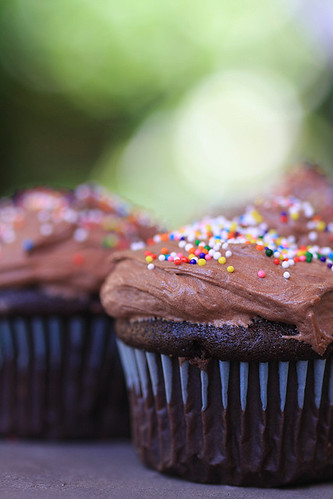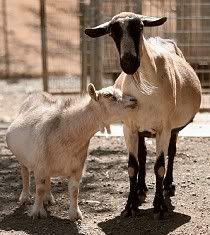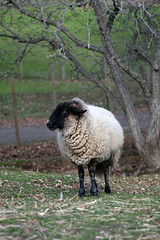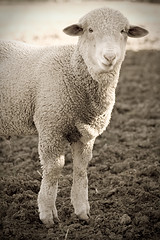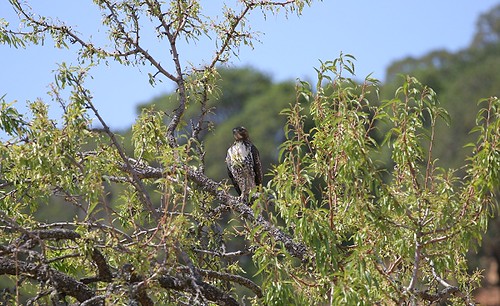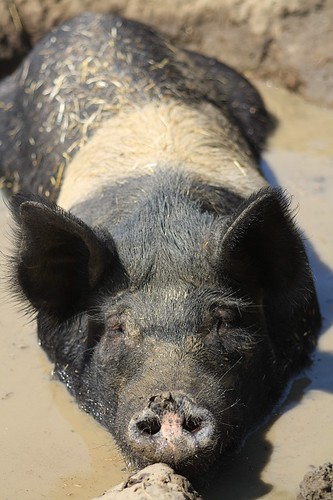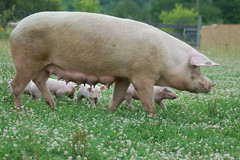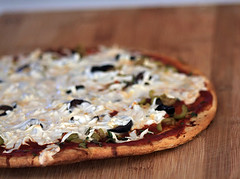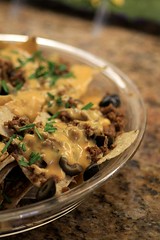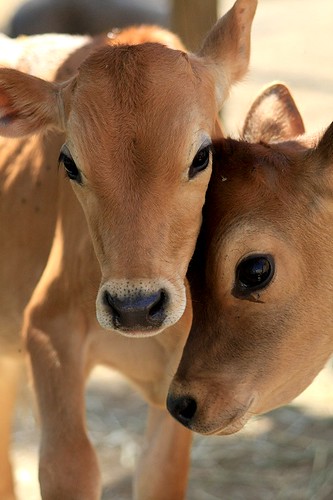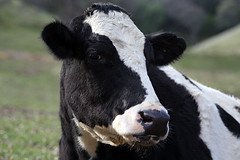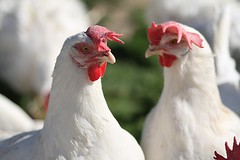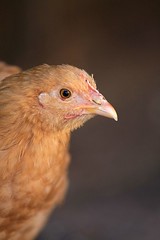 Some of the species are particularly unhappy in the hot sun. The larger pigs, for example, lack most of the sweat glands that help keep us humans a little cooler. Instead, they have to mitigate the heat by wallowing in water, getting mud caked on them (protects from sun burn and flies) and hide out in cool spots. Even when they do find a shady area, staff often rubs them down with a large dish-sized ice cube. Fans in the largest barn are on all day to help with air flow as well.
Some of the species are particularly unhappy in the hot sun. The larger pigs, for example, lack most of the sweat glands that help keep us humans a little cooler. Instead, they have to mitigate the heat by wallowing in water, getting mud caked on them (protects from sun burn and flies) and hide out in cool spots. Even when they do find a shady area, staff often rubs them down with a large dish-sized ice cube. Fans in the largest barn are on all day to help with air flow as well.Chickens and turkeys have an awesome misting system that my camera said no to photographing. We also put out large bowls of water for the birds to soak their feet. Sometimes there are little squabbles over who gets the best soaking spot. And sometimes, the birds have to vie for mister space with human visitors - on today's tour, all the humans were hogging the misters for themselves!! It was 101 F so I couldn't blame them too much.
Rabbits are another heat sensitive species and they get frozen water bottles and frozen tiles to lay upon. The rabbits at the sanctuary really don't like water, so we cannot spray them down like we would for the pigs.
The cattle, goats and sheep handle the heat a lot better. I'm looking out at Howie and Sadie right now, both standing in the sun, chewing their cud and not at all bothered by the 100+ degree weather. I certainly don't want to be directly in the sun right now!
If you live in hot areas, please keep cool. Drink a lot of water, stay in the shade and minimize your exposure to the sun. Wear sunscreen - some of our pinkest pigs do, so you know it's awesome stuff (our pigs are totally stylish, cool creatures).


